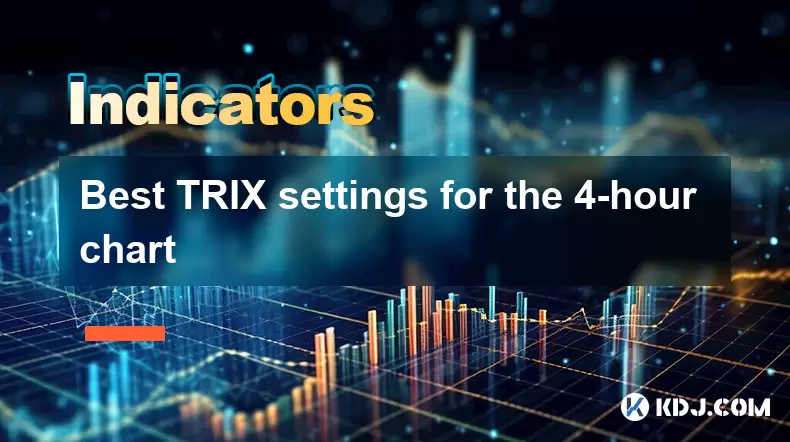-
 Bitcoin
Bitcoin $118,209.3536
1.16% -
 Ethereum
Ethereum $3,151.7546
5.98% -
 XRP
XRP $2.9277
2.35% -
 Tether USDt
Tether USDt $1.0000
0.00% -
 BNB
BNB $689.7099
1.26% -
 Solana
Solana $163.4270
1.91% -
 USDC
USDC $1.0000
0.02% -
 Dogecoin
Dogecoin $0.1983
3.74% -
 TRON
TRON $0.3008
0.51% -
 Cardano
Cardano $0.7435
2.86% -
 Hyperliquid
Hyperliquid $47.6547
-0.48% -
 Stellar
Stellar $0.4625
2.79% -
 Sui
Sui $3.9921
2.71% -
 Chainlink
Chainlink $16.0608
4.23% -
 Hedera
Hedera $0.2348
1.56% -
 Bitcoin Cash
Bitcoin Cash $496.6985
1.25% -
 Avalanche
Avalanche $21.9038
5.41% -
 UNUS SED LEO
UNUS SED LEO $8.8356
-1.88% -
 Shiba Inu
Shiba Inu $0.0...01364
5.31% -
 Toncoin
Toncoin $3.1102
4.35% -
 Litecoin
Litecoin $95.9756
3.59% -
 Polkadot
Polkadot $4.0925
5.78% -
 Monero
Monero $333.7622
-1.44% -
 Uniswap
Uniswap $9.1968
2.25% -
 Bitget Token
Bitget Token $4.6378
6.23% -
 Pepe
Pepe $0.0...01282
6.77% -
 Dai
Dai $1.0002
0.03% -
 Ethena USDe
Ethena USDe $1.0005
0.00% -
 Aave
Aave $329.9143
4.49% -
 Bittensor
Bittensor $441.4995
6.89%
Best TRIX settings for the 4-hour chart
TRIX helps crypto traders spot momentum shifts and trend reversals on the 4-hour chart by smoothing price data and reducing market noise.
Jul 14, 2025 at 04:00 pm

Understanding TRIX and Its Role in Crypto Trading
TRIX, or Triple Exponential Average, is a momentum oscillator primarily used to identify oversold and overbought conditions, as well as potential trend reversals. In the cryptocurrency trading space, where volatility is high and trends can shift quickly, using the right TRIX settings becomes crucial for traders aiming to make informed decisions on higher timeframes like the 4-hour chart. Unlike fast-moving indicators such as RSI or MACD, TRIX filters out market noise by applying triple exponential smoothing to price data.
When applied to the 4-hour chart, TRIX helps traders avoid false signals that often occur on lower timeframes. This makes it particularly useful for swing traders or those who prefer holding positions for several hours to days. The key lies in selecting the appropriate period setting and understanding how to interpret crossovers and divergences effectively.
Default vs Customized TRIX Settings
The default TRIX setting most commonly found across platforms is 14 periods. While this works well on daily or weekly charts, it may not be optimal for the 4-hour timeframe due to its slower reaction to price changes. Many professional traders tweak the parameter to better suit shorter-term strategies without sacrificing the smoothing effect that defines TRIX.
Some traders adjust the period to 9 or 12 when analyzing the 4-hour chart. A lower period value increases sensitivity, making it easier to spot early entries during trend formations. Conversely, keeping it at 15 or 18 ensures smoother readings with fewer false signals, which is beneficial in sideways or choppy markets. Each trader must backtest different values against historical crypto pairs to determine what works best for their strategy.
Using Signal Line Crossovers Effectively
One of the core features of TRIX is its signal line, which is typically a 9-period EMA (Exponential Moving Average) of the TRIX line itself. When the TRIX line crosses above the signal line, it indicates positive momentum, suggesting a potential uptrend. Similarly, when it crosses below, it signals negative momentum, possibly signaling a downtrend.
On the 4-hour chart, these crossovers are more reliable than on shorter timeframes. However, traders should look for additional confirmation through candlestick patterns or volume spikes before entering trades. For instance, a bullish crossover occurring near a key support level on Bitcoin's 4-hour chart might offer a strong long entry point.
- Ensure the signal line is set to 9 EMA
- Look for clean crossovers without overlapping
- Avoid trading in tight consolidation zones
- Combine with volume analysis for stronger signals
Identifying Divergence Patterns
Divergence between TRIX and price action is a powerful tool, especially when applied to the 4-hour chart. If the price of Ethereum makes a new high but TRIX fails to confirm and instead forms a lower high, it could indicate weakening momentum and an upcoming reversal.
To spot divergence accurately:
- Use horizontal lines to mark highs/lows on both price and TRIX
- Compare the peaks/troughs visually
- Confirm with other tools like RSI or Stochastic
- Watch for volume contraction during divergence formation
This method is especially effective in spotting tops and bottoms in trending markets. Traders who rely on pullbacks or reversals often use TRIX divergence as a primary filter before initiating counter-trend trades.
Fine-Tuning TRIX for Different Market Conditions
Market conditions vary significantly in cryptocurrency. Sometimes the market is in a strong trend, while at other times it's range-bound or consolidating. Adjusting TRIX parameters accordingly can improve trade accuracy.
In trending environments, a faster TRIX setting like 9 or 10 can help capture early moves. During ranging or volatile phases, increasing the period to 15 or 18 reduces whipsaws and provides clearer signals. Some advanced traders even switch between two TRIX settings — one fast and one slow — to compare momentum shifts dynamically.
- For trending markets: Try TRIX(9) with Signal(3)
- For ranging markets: Opt for TRIX(15) with Signal(9)
- Always test settings on historical data before live trading
- Use multiple timeframes for context
Frequently Asked Questions (FAQ)
What is the best TRIX setting for altcoins on the 4-hour chart?
While TRIX(12) is often preferred for altcoins due to their inherent volatility, some traders opt for TRIX(9) to catch quicker moves. It's essential to adjust based on the specific coin’s behavior and test across different cycles.
Can I use TRIX alone for trading decisions on the 4-hour chart?
It’s generally not recommended to use TRIX in isolation. Combining it with price action analysis, volume indicators, or support/resistance levels improves decision-making and reduces false signals, especially in crypto markets.
How does TRIX compare to MACD on the 4-hour chart?
TRIX tends to be smoother and less reactive than MACD because of its triple smoothing process. This makes TRIX better suited for filtering out noise, whereas MACD may generate more frequent signals, some of which can be misleading on the 4-hour chart.
Should I use the same TRIX settings across all cryptocurrencies?
No, different cryptocurrencies exhibit varying degrees of volatility and trend strength. For example, Bitcoin may perform better with TRIX(14), while Solana or Cardano may respond better to TRIX(11 or 12). Always conduct individual testing per asset.
Disclaimer:info@kdj.com
The information provided is not trading advice. kdj.com does not assume any responsibility for any investments made based on the information provided in this article. Cryptocurrencies are highly volatile and it is highly recommended that you invest with caution after thorough research!
If you believe that the content used on this website infringes your copyright, please contact us immediately (info@kdj.com) and we will delete it promptly.
- Bitcoin's Bullish Run: Demand Surges, Correction Unlikely?
- 2025-07-16 12:30:12
- MetYa, Conflux Network, and SocialFi: Building the Future of Web3
- 2025-07-16 12:30:12
- Cantor Fitzgerald, Bitcoin, and SPAC Acquisitions: A New York Perspective
- 2025-07-16 10:30:12
- PoL v2 and BeraChain: Building a Stronger Blockchain Ecosystem
- 2025-07-16 10:30:12
- Bitcoin, Social Media, and FOMO: A New Yorker's Take on the Crypto Craze
- 2025-07-16 10:50:12
- GameStop, Bitcoin, and the Inflation Hedge: A New York Perspective
- 2025-07-16 08:30:12
Related knowledge

Advanced RSI strategies for crypto
Jul 13,2025 at 11:01am
Understanding the Basics of RSI in Cryptocurrency TradingThe Relative Strength Index (RSI) is a momentum oscillator used to measure the speed and chan...

Crypto RSI for day trading
Jul 12,2025 at 11:14am
Understanding RSI in the Context of Cryptocurrency TradingThe Relative Strength Index (RSI) is a momentum oscillator used to measure the speed and cha...

Crypto RSI for scalping
Jul 12,2025 at 11:00pm
Understanding RSI in the Context of Crypto TradingThe Relative Strength Index (RSI) is a momentum oscillator widely used by traders to measure the spe...

What does an RSI of 30 mean in crypto
Jul 15,2025 at 07:07pm
Understanding RSI in Cryptocurrency TradingRelative Strength Index (RSI) is a momentum oscillator widely used in cryptocurrency trading to measure the...

What does an RSI of 70 mean in crypto
Jul 13,2025 at 06:07pm
Understanding the RSI Indicator in Cryptocurrency TradingThe Relative Strength Index (RSI) is a widely used technical analysis tool that helps traders...

Does RSI work in a bear market for crypto
Jul 16,2025 at 01:36pm
Understanding RSI in Cryptocurrency TradingThe Relative Strength Index (RSI) is a momentum oscillator used by traders to measure the speed and change ...

Advanced RSI strategies for crypto
Jul 13,2025 at 11:01am
Understanding the Basics of RSI in Cryptocurrency TradingThe Relative Strength Index (RSI) is a momentum oscillator used to measure the speed and chan...

Crypto RSI for day trading
Jul 12,2025 at 11:14am
Understanding RSI in the Context of Cryptocurrency TradingThe Relative Strength Index (RSI) is a momentum oscillator used to measure the speed and cha...

Crypto RSI for scalping
Jul 12,2025 at 11:00pm
Understanding RSI in the Context of Crypto TradingThe Relative Strength Index (RSI) is a momentum oscillator widely used by traders to measure the spe...

What does an RSI of 30 mean in crypto
Jul 15,2025 at 07:07pm
Understanding RSI in Cryptocurrency TradingRelative Strength Index (RSI) is a momentum oscillator widely used in cryptocurrency trading to measure the...

What does an RSI of 70 mean in crypto
Jul 13,2025 at 06:07pm
Understanding the RSI Indicator in Cryptocurrency TradingThe Relative Strength Index (RSI) is a widely used technical analysis tool that helps traders...

Does RSI work in a bear market for crypto
Jul 16,2025 at 01:36pm
Understanding RSI in Cryptocurrency TradingThe Relative Strength Index (RSI) is a momentum oscillator used by traders to measure the speed and change ...
See all articles

























































































